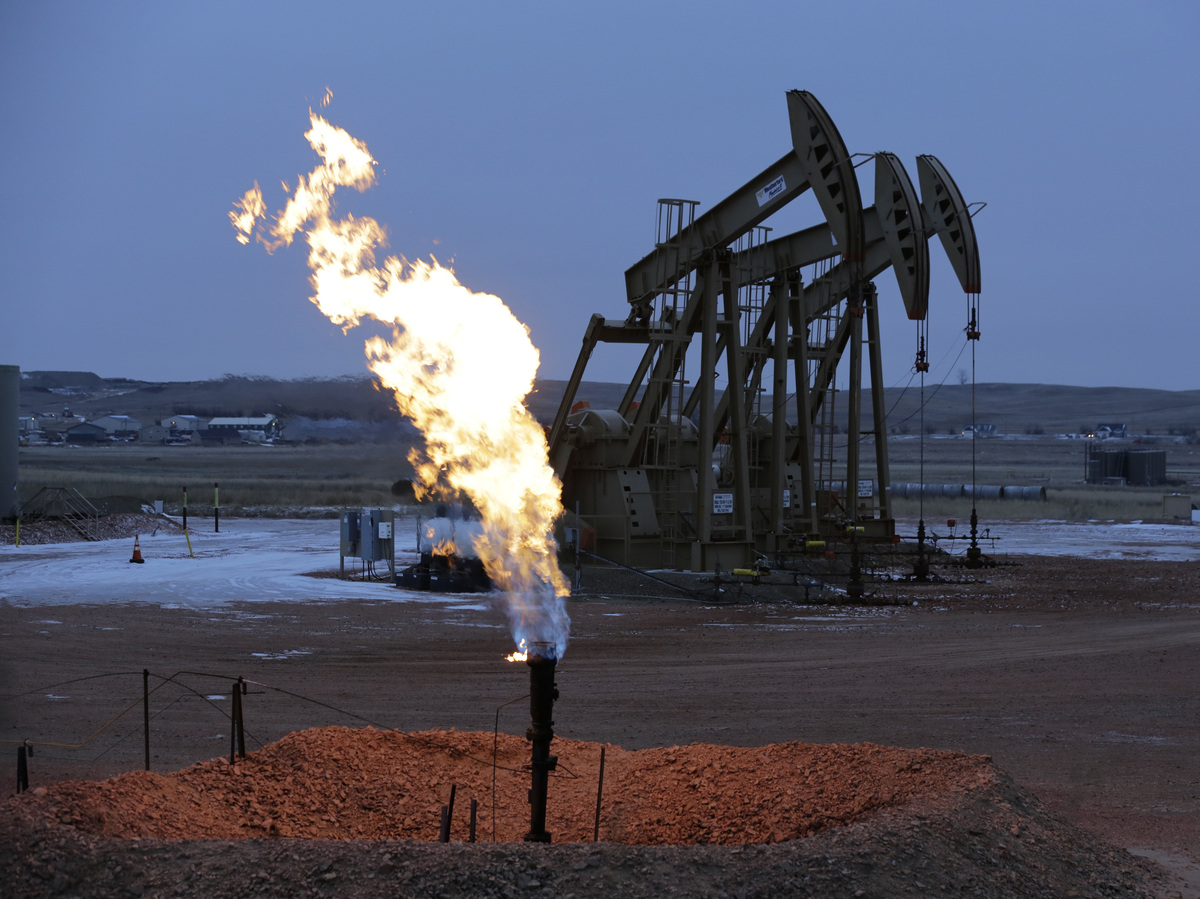[ad_1]

Methane, the main component of natural gas, is also a byproduct of oil drilling.
Eric Gay/AP
hide caption
toggle caption
Eric Gay/AP

Methane, the main component of natural gas, is also a byproduct of oil drilling.
Eric Gay/AP
Flares, or fires lit at oil and gas wells to burn off excess gas that cannot be transported and sold, are a common sight at oil fields around the world. Some are even visible from space.
But a new study published in the journal Science Thursday found that the process is not eliminating nearly as much methane, a greenhouse gas many times more potent than carbon dioxide, as assumed.
“Our findings indicate that flaring is responsible for five times more methane entering the atmosphere than we previously thought,” says Genevieve Plant, lead author and assistant research scientist at the University of Michigan.
Methane, the main component of natural gas, is also a byproduct of oil drilling. Flaring is a way to convert unsellable gas into compounds such as carbon dioxide, which still cause global warming but are less harmful in the near-term. Flares are designed to eliminate at least 98% of the methane that passes through them, and that is the default amount used when estimating the emissions they create.
But that assumption had not been rigorously tested in the real world, says Plant, “so that’s why we went to study it.”
Planes measured methane seeping into the atmosphere
In 2020 and 2021, she and other researchers took more than 12 flights to test the emissions produced by flaring across the three major U.S. oil and gas producing areas: the Bakken Formation in North Dakota and Montana; and the Permian Basin and Eagle Ford Shale in Texas and New Mexico. The group sampled more than 300 individual flares and took over 600 readings, representing a significant increase in the amount of real word data from these sources.
They found that the flaring in these locations only converted about 91% of methane released from the ground into other compounds. Some of that was due to a small percentage of flares that weren’t lit and were therefore releasing methane directly into the atmosphere. The rest was due to inefficient flaring, although the study does not investigate why some flares release excess methane.
But getting to the bottom of that, and making flaring more efficient, could reduce climate-warming emissions by the same amount as pulling nearly three million cars off the road, according to the Science study.
“It isn’t shocking to see these results,” says Rob Jackson, professor of Earth System Science at Stanford University. He also studies the climate impacts of methane but was not involved in the new study. He says these findings show, “We can’t just rely on what the best case scenario for emissions is.”
Oil and gas industry says it’s already working on methane pollution
In response to the study, industry groups pointed to their own commitments to try to cut back methane emissions, including from flaring.
“Member companies are prioritizing emissions reductions and are taking action,” said Cole Ramsey, American Petroleum Institute’s vice president of upstream policy, in a statement. The group reported recently that participating companies, representing about 70% of the industry, had voluntarily reduced how much they flared as a function of how much was produced, a measure called flaring intensity, by nearly half.
Ron Ness, president of the North Dakota Petroleum Council, wrote in a statement that his group could not verify the information in the peer-reviewed study because “each well in the Bakken has unique characteristics, but added, “We are extremely proud of our gas capture success in North Dakota.”
These changes come as a growing body of work targets methane, which is responsible for at least 25% of current global warming, according to the Environmental Defense Fund, a nonprofit environmental organization that was also involved in the study. The new study builds on the group’s previous work to try to quantify and document sources of methane leaks.
“There will always be some flaring that occurs,” says Jon Goldstein, senior director, Regulatory & Legislative Affairs at the Environmental Defense Fund, calling the practice a “necessary evil.”
But he says he hopes this new information will encourage the Biden Administration to adopt more regulations on the practice, as it weighs a new rule to force oil and gas companies to clean up their methane pollution. The U.S. is in the top five countries in the world for how much its fossil fuel industry flares, according to the World Bank.
[ad_2]
Source link


Comments are closed.